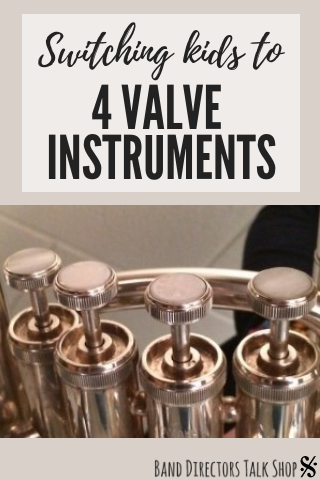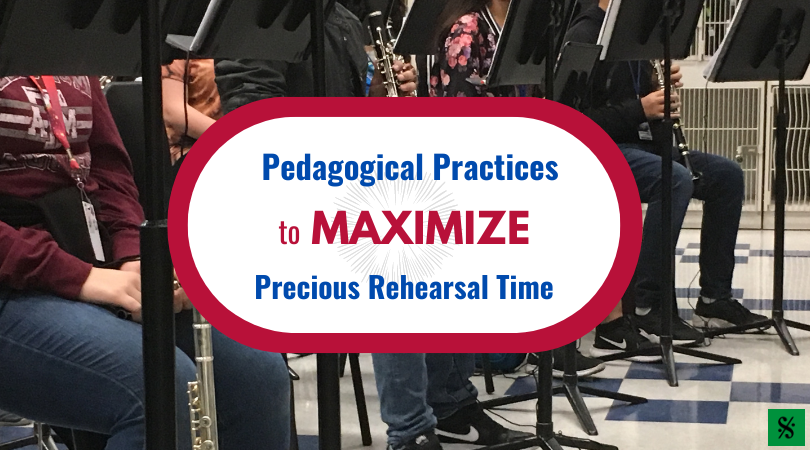When switching kids to 4 valve instruments you should evaluate a number of factors. Here are 3 options to consider when planning your strategy to help kids make the transition smoothly.

Option 1
Start all your beginner baritones and tubas on 3 valve instruments and have them stay on those the entire beginner year.
Benefits –
1.The small baritone and 3/4 tuba are a better size for smaller students.
2. It allows you to have a “beginner” set and advanced band set of instruments. The students have to mature enough as a player to be trusted with the nicer horn.
3. The smaller instruments are easier to take back and forth from home to school.
Drawbacks –
1. Kids get used to the size and it’s a big shock to their system the next year when they are issued a larger instrument.
2. The students are thrown into advanced band which is overwhelming and they have a new horn on top of all the other new things they are getting used to.
3. The only time you can really work with them is in sectionals or have another director taking them out, so they don’t get as much individual attention as they make the switch.
4. The next year they can be more resistant to taking it home because it’s more work than the smaller instruments. Some use the logistics of this as an excuse not to take the 4 valve instruments home to practice.
Option 2
Start all baritone and tuba players on 4 valve instruments.
Benefits –
1. There is no change in size so they don’t have to adjust.
2. There are no changes to fingering patterns to learn.
3. They are used to transportation issues and learn how to get it back and forth from home from the beginning.
Drawbacks –
1. The instrument may be too large for the student. (However, for tubas you can adapt by using a tuba chair or have two chairs on top of each other.)
2. You may not have enough inventory to do this. If you don’t have enough 4 valve instruments, the beginners must use 3 valve the entire beginner year.

Option 3
Start on all players on 3 valve instruments and switch them to 4 valve in March.
Benefits –
1. Because they are still in a beginner setting you can help them on the 4th valve in a homogenous setting. They get daily one-on-one help in making the switch.
2. Kids are more prepared to have a bigger instrument because they’ve grown some but also because they have learned how to handle the instrument and the awkwardness is gone.
3. It’s a smaller setting and you can be more insistent that instruments are going home and help them figure out a game plan for transportation that can continue throughout the years.
Drawback –
1. You must must have enough instruments for each student to have one.
My recommendation when switching kids to 4 valve instruments is that if you have enough inventory to make it work, you should try Option 3. It has the most benefits and least drawbacks. If your program does not currently have 4 valve instruments, consider making it a priority when funds become available.
Bonus Tip for Baritones Only…
Whenever you do switch baritone players to 4 valves, consider having them use the 1st finger of the left hand to come around and play the 4th valve. It is stronger than the right hand pinky and easier for young kids. Also, when they switch later to a compensating euphonium they will be using the 1st finger on the left hand for the lower 4th valve and this helps prepare them for that change.
This article was contributed by BJ Sayger. He is a euphonium specialist and is in his 17th year of teaching middle school band.
Related Reading:
Brass YouTube Finds for your Students
4 Tips to Help Beginning Tuba Players
It’s a Tuba Thing
If you would like to receive our weekly newsletter, sign up here.
Don’t forget to like us on Facebook too!
Learn. Share. Inspire.
BandDirectorsTalkShop.com





